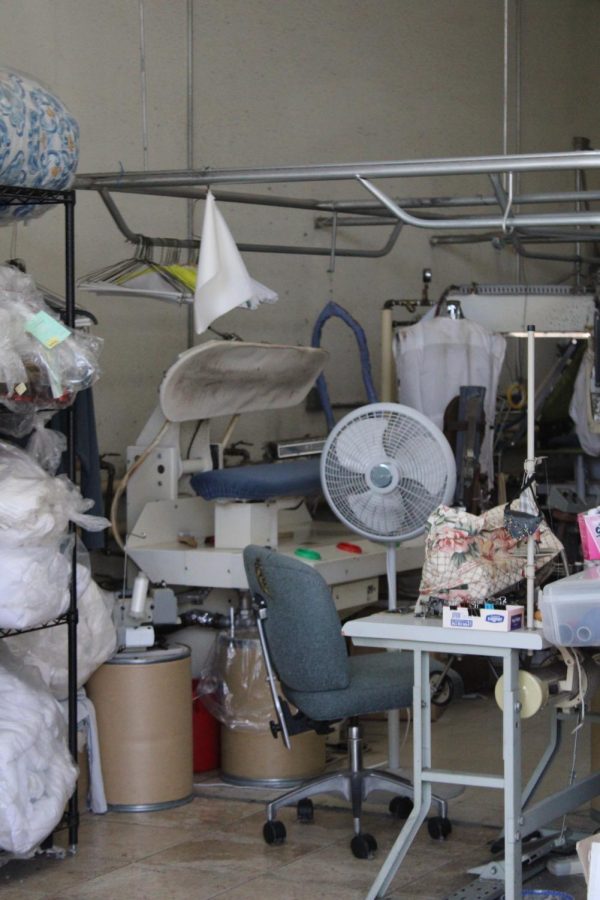Recycled and Second Hand Fashion
December 11, 2022
The fashion industry has shown an immense correlation to overall pollution. “The EPA reports that Americans generate 16 million tons of textile waste a year, equaling just over six percent of total municipal waste,” said Green America, published in What Really Happens to Unwanted Clothes? While plastic being textiles included contributes to 13% of overall waste. “It also accounts for a fifth of the 300 million tons of plastic produced globally each year,” wrote Rachael Dottle and Jackie Gu, in The Global Glut of Clothing Is an Environmental Crisis on February 23, 2022. Informing the fashion industry that something needs to be changed.
Students at Ida B. Wells High School have also come to the understanding that there is quite a severity to this issue. Last year, current juniors, students’ Mari Woodside, Emma Boyles, and Lauren Patrick created an ad campaign informing other students of the negative effects of fast fashion: https://www.youtube.com/watch?v=IbNyeDJOEhA
Global effects are the main impact. “Modern textiles rely heavily on petrochemical products that come from many of the same oil and gas companies driving greenhouse gas emissions,” wrote Rachael Dottle and Jackie Gu, in The Global Glut of Clothing Is an Environmental Crisis on February 23, 2022. This inferring that The fashion industry is partly responsible, and as consumers individuals need to lower their carbon footprint. The waste created by the fashion industry is inevitably casting negative side effects on the planet. “Eighty-seven percent of the total fiber input used for clothing is ultimately incinerated or sent to a landfill,” wrote Dottle and Gu .This inferred the amount of waste being produced for these brands is more than what is being kept.
High demand is largely contributing to the issue at hand — this refers to the level in which new clothing is desired at rapid rates. This creates a demand, and in order to keep up with this demand great waste accumulated. This falls back to the fashion community as a whole, “When it comes to the environmental impacts of the industry, fast fashion is often blamed,” Dottle and Gu wrote. “But high-end brands originate trends and generate demand for new styles, which are then mass produced by fast fashion companies for a fraction of the cost.” Although the fashion industry has negative impacts, the creative aspect was never meant to have these implications. Yet due to this greed to profit, fast fashion companies create an impact without sharing the creativity or originality.
The production of clothing, turning to recycled forms of designing is essential. Many different designers have detached their creativity of originality in textiles to recycled creativity — which, some would argue, is a greater creative approach to designing. Even high fashion designers have taken this approach of design to a new level, in hopes it will inspire more fashion within this Dictum. Designers such as: Hunza G, Sanyukta Shrestha, Stella McCartney, Gabriela Hearst and Camille Perry & Holly Wright have picked up on this incoming interpretation of fashion and truly have embraced this originality of recycled fashion.
Fast fashion has created this division between levels of creativity, or lack thereof. “The number of garments produced each year has at least doubled since 2000,”Dottle and Gu wrote.. Fast fashion brands have profited off the creativity of individual designers, maily high end. Due to greater budgets, high end brands are able to move their production along in a more sustainable way, but yet they are left with creating a system which simply copies these ideas, while making lower quality items with harmful environmental aspects added due to deficiency in expenditure.
Because of this, the fashion community as a whole must turn over a new leaf. This waste needs to be significantly cut back, the fashion community is already on their way. “On average, 700,000 tons of used clothing gets exported overseas and 2.5 million tons of clothing are recycled,” Dottle and Gu wrote. “But over three million tons are incinerated, and a staggering 10 million tons get sent to landfills.” Although this is a step in the right direction, it is not nearly enough. Studies have shown “Recycling textiles can keep materials out of landfills and incinerators as well as reduce need for virgin fibers by extending the life of existing ones.” The Good Trade stated in 7 Sustainable Luxury Designers Disrupting The Fashion Industry on July 28, 2022.
With all of this in mind, consumers and designers must keep changing the norm. Whether this be shopping second hand or taking inspiration in the creativity of recycling textiles, the fashion industry needs to take accountability and become more sustainable.



